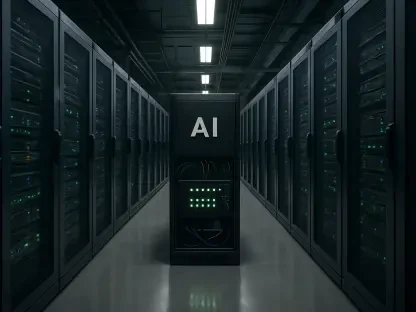In a world continuously shaped by technological innovation, enterprises are at a crossroads, seeking modern solutions to leverage artificial intelligence (AI) effectively. One emerging model, GPU-as-a-Service (GPUaaS), is gaining traction, offering high-performance computing capabilities without the burdensome capital expenditure traditionally associated with AI infrastructure. This market analysis explores whether GPUaaS could be the cornerstone of enterprise AI’s future, addressing current limitations and future opportunities.
Unleashing AI Potential through Innovative Infrastructure
The exponential growth of AI technologies has highlighted significant inadequacies in traditional cloud-based infrastructures, especially concerning real-time processing and responsiveness. Enterprises face increasing pressure to adopt flexible, scalable solutions capable of supporting AI-driven insights without latency. GPUaaS emerges as a pivotal development, enabling enterprises to access advanced computing power on a subscription basis, thus supporting agile AI deployments. By focusing on decentralization, this service model addresses these challenges, representing a shift toward more responsive AI environments.
Market Trends and Technological Advancements
The shift from centralized cloud infrastructure to distributed models is no longer a mere trend; it has become a necessity as enterprises demand quicker, more reliable AI solutions. GPUaaS offers an attractive proposition with its ability to enhance performance and maintain data control, crucial for data sovereignty and compliance. The rise of complementary technologies like edge computing and 5G further strengthens GPUaaS’s position, enhancing connectivity and reducing latency. Enterprises now prioritize robust infrastructures that align with the evolving digital landscape, driving widespread GPUaaS adoption.
Industry Implications and Strategic Considerations
GPUaaS’s impact spans various sectors, each with distinct needs and constraints. Regional differences in adoption illustrate how local expertise and regulatory environments influence GPUaaS integration. Some markets are leveraging these services to spearhead digital transformation, whereas others face obstacles related to costs or infrastructure limits. Addressing misconceptions about GPUaaS complexity and security is crucial for broader acceptance. Identifying tailored strategies to navigate this diverse market landscape will ensure enterprises capitalize on GPUaaS’s potential.
Strategic Insights and Future Direction
As enterprises advance their AI capabilities, strategic incorporation of GPUaaS will be essential. By evaluating needs and aligning with appropriate service providers, organizations can harness GPUaaS to optimize operations. Monitoring regulatory shifts and technological advancements will be vital in guiding this transition. The future belongs to enterprises willing to integrate GPUaaS, accommodating data privacy concerns while delivering real-time AI solutions that meet modern demands.
Ultimately, the journey toward adopting GPUaaS reflects a broader commitment to agile, secure, and scalable AI deployments. Implementing strategic frameworks that leverage GPUaaS effectively will position enterprises to navigate the future’s complexities and seize new opportunities within an AI-centric landscape. As enterprises adapt, those embracing GPUaaS will likely set the pace in pioneering intelligent, responsive solutions that redefine competitive advantage.









